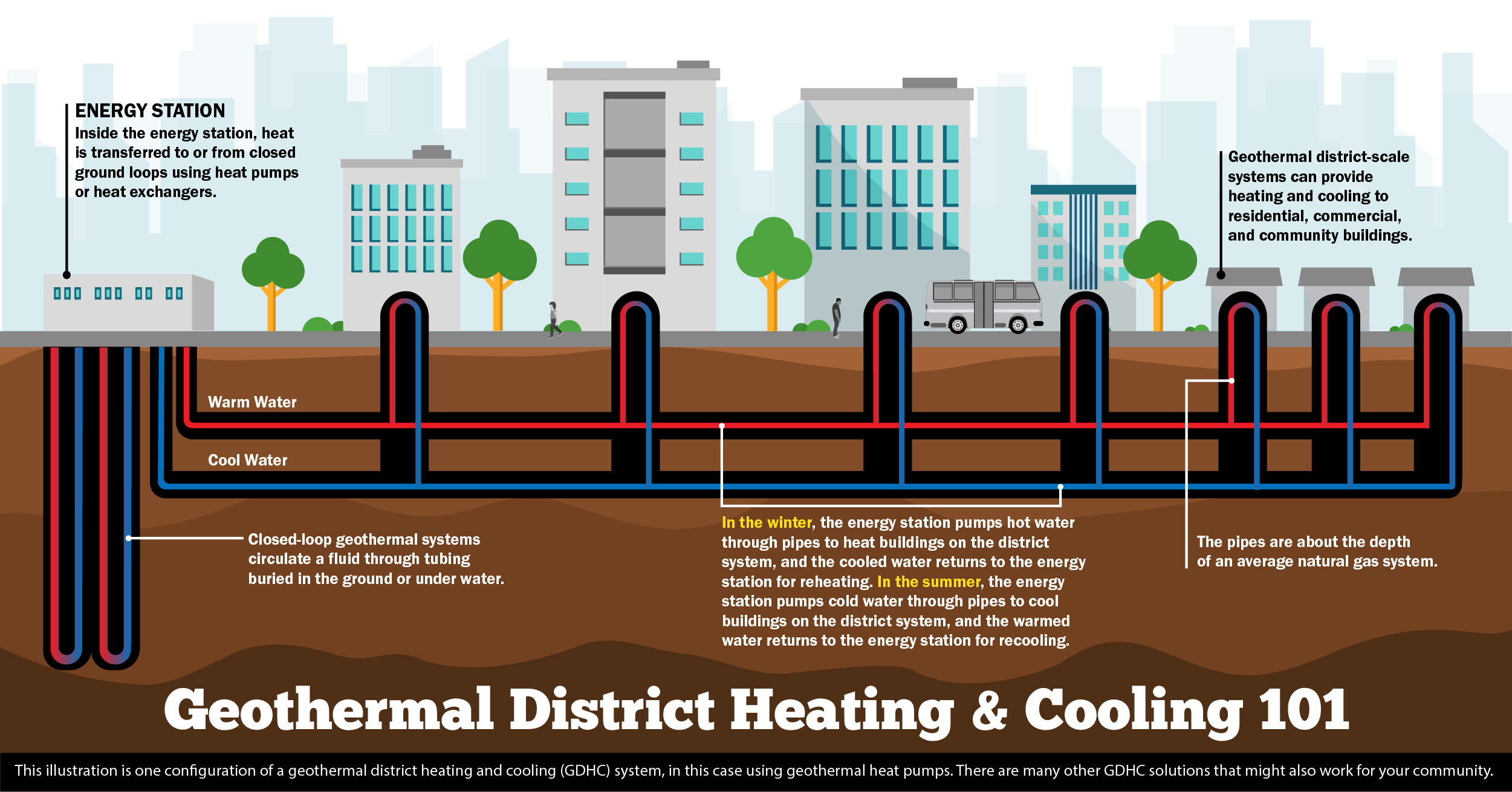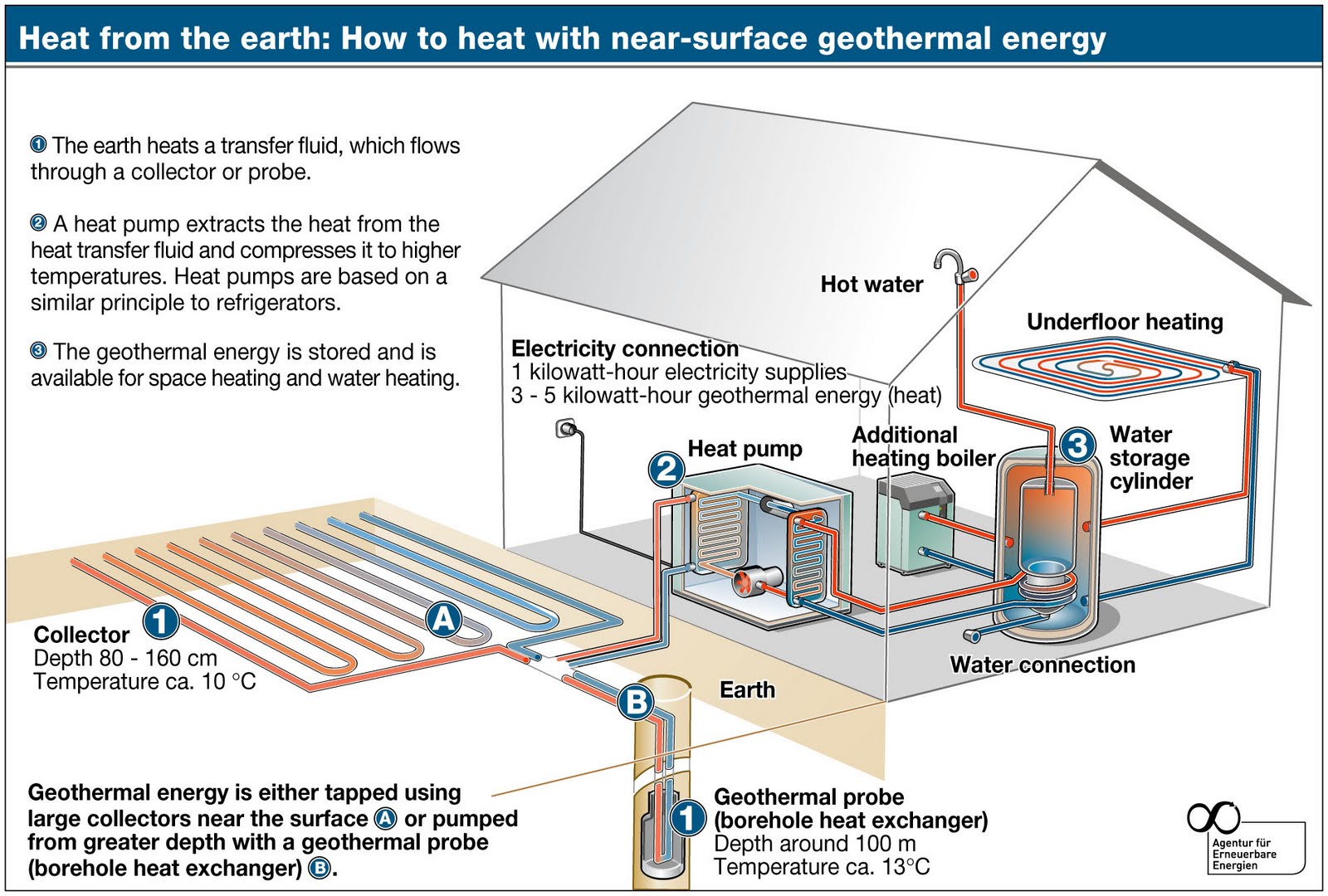Geothermal Wells For Heating And Cooling

Geothermal Wells: Harnessing Earth's Natural Energy for Home Comfort
Geothermal heating and cooling is a fantastic option for homeowners seeking energy-efficient and environmentally friendly HVAC solutions. Unlike traditional systems that burn fossil fuels or rely solely on air temperature, geothermal systems tap into the consistent, moderate temperature of the earth. This article will explore the workings of geothermal wells, common issues, maintenance tips, and when it’s time to call in the professionals.
Understanding Geothermal Systems
At the heart of a geothermal system is a ground loop, which is a network of pipes buried underground. These pipes circulate a water-based solution, often containing antifreeze, to transfer heat to and from the earth. The consistent temperature deep in the ground (typically between 45°F and 75°F) allows the system to efficiently heat your home in the winter and cool it in the summer.
There are primarily two types of geothermal well configurations:
- Vertical Loops: These are the most common type. A well is drilled deep into the ground (typically 100-500 feet), and a U-shaped pipe is inserted. This configuration is ideal for properties with limited surface area.
- Horizontal Loops: These require more land. Pipes are buried horizontally in trenches about 6-8 feet deep. This is often more cost-effective to install if you have sufficient land available.
The geothermal heat pump inside your home circulates the refrigerant. It extracts heat from the loop in winter and transfers heat to the loop in summer. This heat pump is responsible for boosting the temperature of the water coming from the well to a usable level.
DIY Maintenance Tasks
While professional maintenance is crucial for the longevity of your geothermal system, there are a few things you can do yourself to ensure optimal performance:
- Air Filter Checks: Just like any forced-air system, clean filters are essential. Check the filter monthly and replace it every 1-3 months, depending on the air quality in your home. A dirty filter restricts airflow, reducing efficiency and potentially damaging the heat pump.
- Visual Inspection: Periodically inspect the visible components of the system, including the heat pump, piping connections, and circulating pumps (if accessible). Look for signs of leaks, corrosion, or damage.
- Thermostat Settings: Ensure your thermostat is programmed correctly for both heating and cooling modes. Experiment with different temperature settings to find the most comfortable and energy-efficient options for your home.
- Check Circulating Pumps: Ensure the circulating pump is running smoothly and quietly. Loud noises or vibrations could indicate a problem requiring professional attention.
Common Geothermal Well Problems & Troubleshooting
Geothermal systems are generally reliable, but problems can arise. Here are some common issues and how to troubleshoot them:
1. Insufficient Heating or Cooling
Possible Causes:
- Low Refrigerant: This is a common issue in all heat pump systems. Refrigerant leaks can reduce the system's ability to transfer heat effectively.
- Airflow Obstruction: Blocked air filters, closed vents, or ductwork leaks can restrict airflow, reducing heating and cooling capacity.
- Ground Loop Problems: Issues within the ground loop itself, such as a leak or reduced flow, can significantly impact performance.
- Heat Pump Malfunction: Internal components of the heat pump, such as the compressor or reversing valve, may fail.
Troubleshooting Steps:
- Check and replace the air filter.
- Ensure all vents are open and unobstructed.
- Inspect visible ductwork for leaks and seal any you find with duct tape or mastic sealant.
- If you suspect a refrigerant leak or heat pump malfunction, call a qualified HVAC technician immediately. Handling refrigerant requires specialized equipment and training.
2. Unusual Noises
Possible Causes:
- Grinding or Screeching: Could indicate a failing compressor or motor bearing.
- Banging or Clanging: Might be loose ductwork or a problem with the blower motor.
- Bubbling or Gurgling: Could indicate air in the ground loop.
Troubleshooting Steps:
- Identify the source of the noise.
- Check ductwork for loose connections and secure them.
- If the noise is coming from the heat pump unit itself, turn off the system and call a professional. Continuing to run a malfunctioning unit can cause further damage.
3. High Energy Bills
Possible Causes:
- Inefficient Operation: Due to a problem with the system components, ground loop issues, or incorrect thermostat settings.
- Poor Insulation: Inadequate insulation in your home can cause heat loss in winter and heat gain in summer, forcing the system to work harder.
- Air Leaks: Gaps around windows, doors, and other openings can let in outside air, increasing energy consumption.
Troubleshooting Steps:
- Review your thermostat settings and adjust them for optimal energy efficiency.
- Ensure your home is properly insulated. Add insulation to attics, walls, and crawl spaces if necessary.
- Seal any air leaks around windows, doors, and other openings with weather stripping or caulk.
- Have a professional inspect the geothermal system for any underlying issues that may be causing reduced efficiency.
4. Ground Loop Problems
This is a tricky area to troubleshoot, as the ground loop is buried underground. Issues like leaks, mineral buildup, or reduced flow can significantly impact the system's performance.
Symptoms:
- Reduced heating and cooling capacity.
- High energy bills.
- Erratic system operation.
Troubleshooting Steps:
- Check the circulating pumps (if accessible) to ensure they are running properly.
- Do not attempt to dig up or repair the ground loop yourself. This is a job for experienced geothermal professionals who have the necessary equipment and expertise.
When to Call a Professional
While some basic maintenance tasks are within the reach of DIY homeowners, more complex issues require the expertise of a qualified HVAC technician specializing in geothermal systems. Here are some situations when you should always call a professional:
- Refrigerant Leaks: Handling refrigerant requires specialized equipment and training.
- Heat Pump Malfunctions: Repairing or replacing internal components of the heat pump is a complex task.
- Ground Loop Problems: These require specialized equipment and expertise to diagnose and repair.
- Electrical Issues: Working with electrical components can be dangerous.
- Lack of Experience: If you are uncomfortable working on any part of the system, it's always best to err on the side of caution and call a professional.
Estimated Repair Costs
Repair costs for geothermal systems can vary widely depending on the nature of the problem, the age of the system, and the location. Here are some estimated cost ranges:
- Air Filter Replacement: $5 - $20 (DIY)
- Thermostat Replacement: $50 - $200 (DIY or professional)
- Refrigerant Recharge: $200 - $800 (Professional only)
- Heat Pump Repair: $300 - $1500 (Professional only)
- Heat Pump Replacement: $4,000 - $10,000+ (Professional only)
- Ground Loop Repair: $500 - $5,000+ (Professional only, depending on the complexity of the repair)
Note: These are just estimates, and the actual cost may vary. Always get multiple quotes from reputable HVAC contractors before making any decisions.
Preventative Maintenance
Regular preventative maintenance is the key to keeping your geothermal system running smoothly and efficiently for years to come. Schedule a professional tune-up at least once a year. A qualified technician will inspect the system, clean components, check refrigerant levels, and identify any potential problems before they become major issues.
A preventative maintenance plan will typically include:
- Inspection of the heat pump and ground loop components.
- Cleaning of coils and other components.
- Checking refrigerant levels and pressure.
- Testing electrical connections.
- Lubricating moving parts.
- Checking and calibrating the thermostat.
Safety First!
Working with HVAC systems can be dangerous if you're not careful. Always follow these safety precautions:
- Turn off the power to the system before performing any maintenance or repairs.
- Wear appropriate safety gear, such as gloves and eye protection.
- Never work on refrigerant lines unless you are a qualified HVAC technician.
- If you are unsure about anything, call a professional.
Geothermal wells offer an efficient and environmentally sound way to heat and cool your home. Understanding the basics of these systems, performing routine maintenance, and knowing when to call a professional will help you keep your system running smoothly and save money on energy bills for years to come. Remember, when in doubt, contact a qualified HVAC professional specializing in geothermal systems. Don't risk damaging your system or harming yourself by attempting repairs beyond your skill level.










